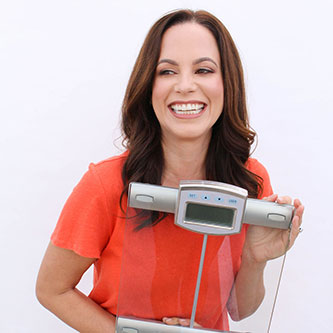- Have any questions?
- 480-767-9018
- support@in-goodhealth.com

Sweeteners: Which Ones Are Best And Why You Should Avoid The Others
May 6, 2015
Update – Will Taking Hydrocortisone Make You Gain Weight?
July 29, 2015
Sweeteners: Which Ones Are Best And Why You Should Avoid The Others
May 6, 2015
Update – Will Taking Hydrocortisone Make You Gain Weight?
July 29, 2015Home > Hormone Reset > Diagnosing Thyroid Disease
Diagnosing Thyroid Disease

Transcript:
Hey, there! Dr. Alan Christianson here. This is a perfect day here in the desert, and I am glad to be talking with you about thyroid disease for a little bit. We will talk about how to diagnose it, and, more importantly, how not to diagnose it. There are so many people who’ve had symptoms for a long time and may be really struggling. Maybe they’ve had a family member with thyroid disease, so they suspect they, too, have it. Maybe they’ve heard from friends who have taken a long time to get diagnosed and treated. Thyroid disease is badly under-diagnosed, and there is a big disconnect between what can be done and what cannot commonly be done.
The reason doctors cannot properly diagnose thyroid disease is that they run only a TSH blood test, and look at the TSH normal range. Many would argue if you are above the range, then you have to check the T4 and see if it is below the range. By the most stringent, conventional guidelines, unless you have a severely elevated TSH (7 or greater) and a clearly low T4, there is no problem with your thyroid. So, that is the first thing not to do. The tests are actually really good, but the ranges are awful. Many people can have normal levels but still have early thyroid disease. This is because the range is based on the population taking these tests, the majority of whom have thyroid disease. So, normal levels are defined as average levels among the sick population taking these tests. You will not stand out in a sick population if you are sick, too. You will be like everyone else, so we really want a better comparison. We want to know how the scores compare to the scores of healthy people, and that is not typically done.
Now, let’s review some alternative things that are done to diagnose thyroid disease. What about basal body temperature? Dr. Broda Barnes saw many attempted blood tests fail in diagnosing thyroid disease, so he used basal body temperature as a gauge. Since that time, we’ve learned the range of basal body temperature in healthy people is a lot broader than we thought. Your temperature can be anywhere from 94 to almost 100 and still be normal. There are severe states, like hyperthyroid storm, that will elevate body temperature, but not until it is severe. There is also myxedema, which will cause your temperature to plummet, but again, when it is severe. So, even when your thyroid is off by substantial amounts, there won’t be a meaningful change in body temperature. There is also talk if you are not between 97.8 and 98.4, there is something wrong with your thyroid. That range is so narrow, and there are so many healthy people not in that range, that it’s almost meaningless. Almost everyone would be diagnosed by that guideline, and that just does not make sense, so body temperature is not an adequate measure.
Next, the Achilles reflex test is used. This is when your doctor hits your knee with a little hammer, and your leg shoots out. This test is checking a reflex. Your muscles are afraid of being torn, so if you lengthen a tendon, your muscle will contract so that it does not lengthen too much. Some places in the body do that very quickly, and you can see how good the involuntary nerve reflex works as a way of gauging the health of the nervous system. In general, your thyroid function affects how reactive your nerves are, so if you are very hypothyroid, all of your nerves are moving slower, which is why you can be more tired, depressed or have a slower metabolism. There is less nerve conduction. If you are badly hyperthyroid, you can be over-reactive, have tremors, move in jerky, erratic fashions and have a more rapid heartbeat. This is because your nerves are over-stimulated. This doesn’t show in some reflexes, so the same way you can check the knee, you can check an Achilles tendon reflex. It is true that those who are badly hyperthyroid have an exaggerated response. Those that are hypo have a sluggish, delayed response. Again, though, it is not sensitive for all those that fall in between, so it isn’t a good gauge until the condition is extreme.

Another test used in the alternative world is the skin iodine test. You take an iodine antiseptic, and put it on your skin. The theory is if you absorb it very fast, you need iodine and are hyperthyroid. If you do not absorb it fast, you are okay. This test did not pan out. A large study was done in the 1930’s on skin iodine tests. They checked people that had thyroid disease, those that did not, some that were clearly iodine-deficient and some that were not. They even checked cadaver skin. Here is what they found happens: If you put iodine on your skin, about 80% of it will absorb in the air over the next 10 – 20 minutes, and about 20% will absorb into the skin. The percentages are the same whether you are living or dead. There is no bearing as to exactly how much iodine absorbs, how fast it absorbs, if you do or don’t have thyroid disease or if you do or don’t have enough iodine in your body. How you absorb it is completely random. So, it is not a functional test.
What does work?
You want to do all the common blood tests. You want to have an eye for how they should look in the healthy populations. Here are the specifics:
1. You want to do a TSH test. You want to check the hormones released by the thyroid, as well. The TSH checks the pituitary, which tells the thyroid how to work. The hormones released include the T3 and T4. The free versions of those hormones are more meaningful than the total version. If it does not say anything besides just T3 or T4, this is the total version and not the free.
2. It is also good to check thyroid antibodies. If your body is attacking your thyroid, the gland typically gets diseased. So, you want to see if your body is attacking it. There is the thyroglobulin antibody (TG) and the thyroid peroxidase antibody (TPO).
3. There is also thyroglobulin which is not the antibody, just thyroglobulin. Thyroglobulin is a good measurement on how irritated or inflamed your thyroid is.
4. You also want to check reverse T3. Reverse T3 is a by-product of your body getting rid of T4, and this can be abnormal, as well.
The last thing I encourage for those who suspect thyroid disease is to get an ultrasound. There are many times when patients’ labs are normal, or they don’t have measurable antibodies, yet an ultrasound shows they have nodules, goiters, calcifications, clear signs of Hashimoto’s.

In terms of the labs, the one test that has the biggest difference in ranges from healthy populations to populations typically tested is the TSH test. Some argue that the free hormones (like the free T3) should be on the higher end of the range. I do not see data to support that. The healthy populations show a large range of T3 and a large range of T4. They are not all in the upper end of the range. The TSH scores in the healthiest populations are at the lower end of the range. So, being on the lower end of the range means you’re further away from being hypothyroid. Specifically, numbers above 1.9 are pretty suspicious. If your TSH is above 1.9, and you have some strong symptoms and some structural abnormalities, that’s thyroid disease. It’s time to treat it, so you can feel better.
I hope that helps. There are a lot of ways you can diagnose thyroid disease and a lot of ways you can miss it, but you can diagnose it, treat it and feel better. We will talk again real soon.

P.S. Whenever you are ready, here is how I can help you now:
- Schedule a Thyroid Second Opinion with me, Dr. C, Click Here for Details
- Need help to choose supplements? Click ‘Help Me Decide Here'
- Get my top books Here
Dr. Alan Glen Christianson (Dr. C) is a Naturopathic Endocrinologist and the author of The NY Times bestselling Hormone Healing Cookbook, The Metabolism Reset Diet, and The Thyroid Reset Diet.
Dr. C’s gift for figuring out what works has helped hundreds of thousands reverse thyroid disease, heal their adrenals, and lose weight naturally. Learn more about the surprising story that started his quest.






